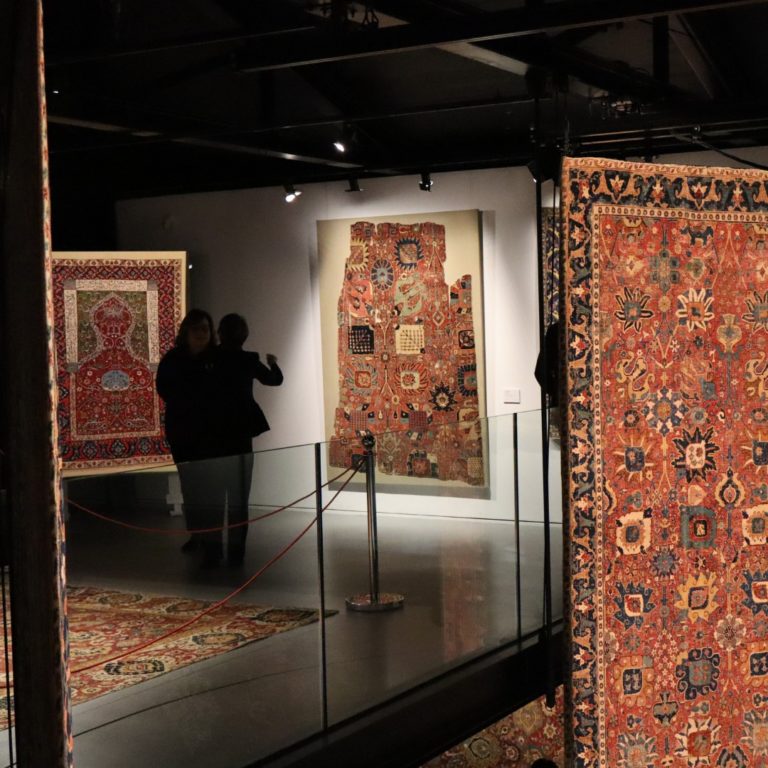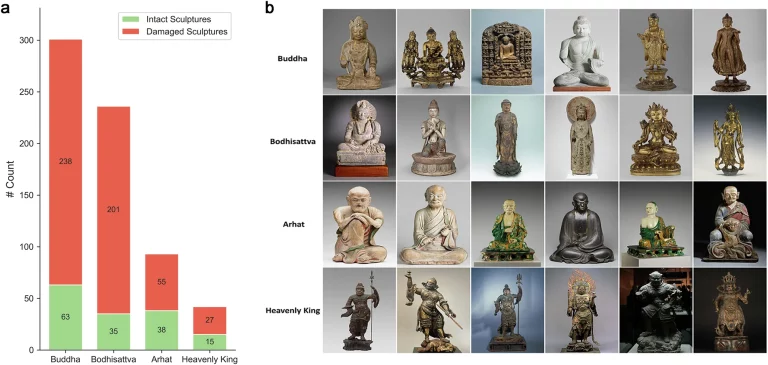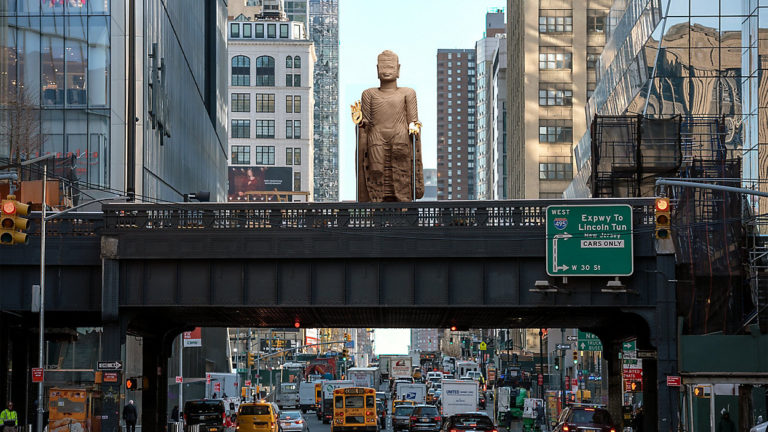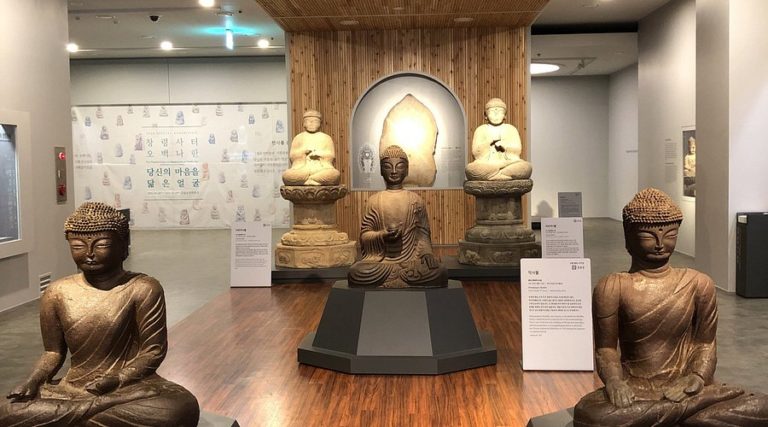True to Japanese patriarchal beliefs, no women monks were allowed to become sokushinbutsu.
Sokushinbutsu shrines of Buddhist monks who transformed themselves into mummies while alive can be seen around Mount Yudono in northern Japan. Pilgrims believe they will rise to save mankind when the time comes.
The search for salvation is within us, or so the holy texts preach, and ‘No Pain, No Gain’ as the Buddha said. Along the sacred slopes of the 1,500-m-high Mt Yudono in the Yamagata Prefecture, Northern Japan, lie mementoes of this transcendental philosophy. Shrines dot the landscape, small and large, with red torii gates and stone pillars. Yudono is one of the three sacred Dewa Sanzan peaks that were thrown open to pilgrims by Prince Hachiko some 1,400 years ago. Their shrines attract mountain worshippers from across the world, for whom each place has special significance; Mt Haguro represents the present world, Mt Gassan the afterlife, and Mt Yudono rebirth. In the subliminal aesthetic of Japanese faith, a Dewa Sanzan pilgrimage is a metaphor of the soul’s journeys.
In fact, the temple at Mt Yudono is no temple; since the mountain itself is deemed one, it cannot be fitted into a shrine. But the Buddha has his ways. Another esoteric part of the Yudono travelogue is sokushinbutsu or ‘Buddhas in Their Very Body’. They are bodies of monks enshrined in special temples: mummified figures with skeletal features, and dehydrated, almost desiccated, skin and postures stooped in the shrug of death. There are around 20 such mummies of monks who embalmed themselves while alive in northern Japan between 1081 and 1903, although the Meiji government outlawed the practice in 1877. Bukkai was the last known monk who embalmed himself to death in 1903; historical records attest to nine more. Their worshippers believe they are not dead, but are ‘embodied Buddhas’ living in a state of deep meditation. People pray to them. The sokushinbutsu aren’t considered mummies since no embalming is involved. True to Japanese patriarchal beliefs, no women monks were allowed to become sokushinbutsu.

In the ninth century, a monk named Kukai founded Shingon Buddhism—a form of Vajrayana, which originated in India and spread outwards, taken by itinerant monks such as Vajrabodhi and Amoghavajra to China and beyond. During a special ritual, Kukai starved himself to death in a finely calibrated manner while meditating. After he died, his body was placed inside a tomb on Mount Koya. Legend says when it was opened decades later, the corpse was intact. In fact, Kukai appeared to be peacefully asleep to the wonderstruck villagers. Another monk had tried sokushinbutsu in 1081, but failed. It took over 1,000 days to complete the process with a self-punishing regimen. It involved the special mummification diet mokujikigyo (tree-eating) and sanro (mountain confinement) usually conducted in Sennin-zawa (Swamp of the Wizards).
No meat. No alcohol.
Also forbidden were ‘Ten Cereals,’ consisting of rice, wheat, soybeans, adzuki beans, black sesame seeds, barnyard grass, millet, foxtail millet, buckwheat and corn. For mokujikigyo, Shingon monks would muck about local forests for tree roots, nuts, bark, berries, pine needles and even river rocks. To prevent bacterial infection, they ate medicinal herbs and nuts. Over months, their bodies slowly lost fat, nutrients, moisture, and muscle mass until any decomposition was stalled. The first try wasn’t always successful; some monks are known to have repeated the process three or four times. A tea made from urushi, the sap of the Chinese lacquer tree, was drunk towards the end of mokujikigyo to induce vomiting and render their bodies poisonous to insects.
In the end, the diet shrank to a sip or two of saline solution. All the while, the sokushinbutsu aspirants stayed in a lodge at Sennin-zawa, and bathed thrice daily in cold water, after which they would visit the shrine while reciting the Mahavairocana sutra. Pilgrims come across small stone memorials along the mountain paths: graves of monks who succumbed to the winters at Sennin-zawa. Once they realised the end was near, the monk would lie down inside a small pine box, which would be then lowered into a 10-foot hole in the earth and covered in charcoal.

The monk was given a small bamboo rod to suck air from outside and a small bell to alert people above the ground that he was alive. Plunged in darkness, soon he would enter dochu nyujo—‘deep meditation within the earth’. One day the tinkle of the bell would fall silent and the tomb would be sealed for 1,000 days. Subsequently, the body would be checked for signs of decay. If it was mummified properly, the dead monk would be considered to have attained the status of Buddha. Its skin would be treated with incense smoke. The body would be dressed in orange ceremonial robes with silver chains and caps, and installed in a temple.
One such sokushinbutsu is even seen sporting black sunshades. The Japanese believe that sokushinbutsu would reach Tusita heaven in the end and remain in a death-like trance for 5.67 billion years after which they would revive and appear to save mankind.
The legends of sokushinbutsus are varied, but are united by the human factor. During the war-ridden Tokugawa Period (1600-1868) in Japan, the sokushinbutsu underwent great punishment on behalf of their adherents. Shinnyokai Shonin of the Dainichibo temple was a local farmer who killed a samurai and took sanctuary at Dainichibo and became a monk.
A great famine came and he chose the sokushinbutsu path as penance to save the people. Testumonkai Shonin was another man to kill a samurai in a fight over a prostitute and become a sokushinbutsu. A story goes that Tetsumonkai tore out his eye to offer to the deities of Yudono to save the citizens of Tokyo (then Edo) from a plague. Embalmed in belief, and ever alive in the memories of pilgrims, the monks of the mountain stand guard over humanity in their sleep.




